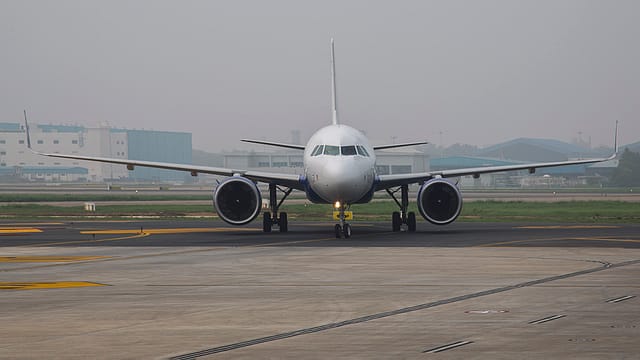Domestic aviation industry to post ₹15,000 cr loss in FY23: ICRA
ADVERTISEMENT

India's domestic airlines are expected to report a net loss of ₹15,000 crore to ₹17,000 crore in the financial year 2022-23 due to elevated aviation turbine fuel (ATF) prices and the recent depreciation of the Indian rupee, according to a report by ICRA.
The gloomy forecast comes despite the central government removing its cap on domestic fares from August 31. Airfares in the domestic sector were capped to stop airlines from charging excess fares amid the Covid-19 pandemic.
While the Ministry of Civil Aviation (MoCA) has discontinued the fare restrictions with effect from August 31, 2022, a sharp hike in airfares will be deterred by the intense competition and airlines' endeavours to maintain or expand their market shares, the ratings agency says.
Despite an expected improvement in passenger traffic, the industry is estimated to report a net loss of around ₹15,000 crore to ₹17,000 crore in FY23 as against an estimated net loss of around ₹23,000 crore in FY22, says Suprio Banerjee, vice president and sector head, ICRA.
This, according to Banerjee, is due to high aviation turbine fuel (ATF) prices and the recent depreciation of the India rupee against the US dollar, both of which have a major bearing on the cost structure of airlines.
Banerjee, however, says a fast-paced recovery in domestic passenger traffic is expected in FY23 aided by improving demand in both leisure and business travel segments. This is attributable to the receding infection level and consequent normalcy in the operating environment. With the waning effect of the pandemic, domestic passenger traffic is expected to witness year-on-year growth of 52-54% in FY23.
January 2026
Netflix, which has been in India for a decade, has successfully struck a balance between high-class premium content and pricing that attracts a range of customers. Find out how the U.S. streaming giant evolved in India, plus an exclusive interview with CEO Ted Sarandos. Also read about the Best Investments for 2026, and how rising growth and easing inflation will come in handy for finance minister Nirmala Sitharaman as she prepares Budget 2026.
The ratings agency expects the recovery in domestic passenger traffic to pre-Covid levels by FY24. Further, with the resumption of scheduled international air operations for Indian carriers since March 27, 2022, and the reversion to bilaterally agreed capacity entitlements, the international passenger traffic for Indian carriers is on a strong growth trajectory (YoY growth of 4.03 times in Q1 FY23) due to pent up demand and is expected to reach or marginally surpass pre-Covid levels in FY23, it says.
An area of concern, according to ICRA, is the elevated ATF prices, which are currently at around ₹1,24,400 per kilolitre, compared to an average of ₹74,171/KL in FY22.
This apart, the recent depreciation of the INR vis-à-vis the US dollar will have a major bearing on the cost structure of airlines since 35–50% of the airlines' operating expenses – including operating lease payments, fuel expenses, and a significant portion of the aircraft and engine maintenance expenses – are denominated in the US dollar.
Despite the significant improvement in passenger traffic, the revenue per available seat kilometre–cost per available seat kilometre (RASK CASK) spread for the Indian carriers in FY2023 is expected to be unfavourable, owing to the significant surge in costs and the limited ability of the airlines to pass on the same to the customers.
With the decline in the industry debt levels towards the end of FY22 on account of notable reduction in debt of Air India before its sale, the interest burden in FY23 is expected to be lower. The debt levels for the domestic aviation industry are expected to be at around ₹1 lakh crore (including lease liabilities) as on March 31, 2023, says ICRA.
